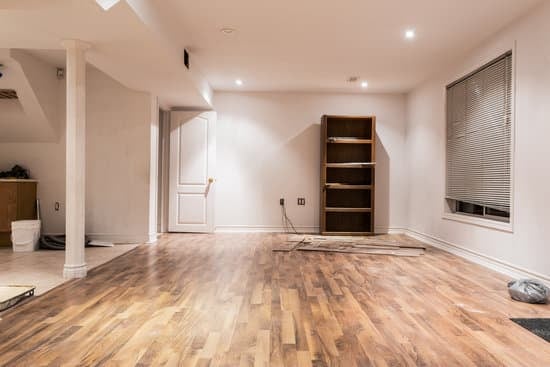Are you wondering how to finance home improvements with no equity? Home improvement projects can be crucial for maintaining and increasing the value of your property, but not everyone has the equity needed to secure a traditional loan. In this article, we will discuss the various options available for financing home improvements without equity.
Home improvement projects are vital for enhancing the comfort and functionality of your living space, as well as increasing the overall value of your property. However, one of the challenges many homeowners face is finding the necessary funds to finance these projects without having sufficient equity in their homes. This article will explore several alternative financing options for those who are looking to make home improvements without relying on home equity.
From personal loans and credit cards to government grants and community-based programs, we will discuss a range of options available to homeowners who are seeking financial assistance for their home improvement projects. Additionally, we will provide tips on budgeting and saving effectively for these projects, as well as unconventional financing options such as crowdfunding or peer-to-peer lending.
By the end of this article, you will have a better understanding of how to finance home improvements with no equity.
Personal Loans
When it comes to financing home improvements without equity, personal loans can be a viable option for many homeowners. Personal loans are unsecured loans, meaning they do not require any collateral such as home equity. These types of loans can be obtained from banks, credit unions, or online lenders and can provide the funds needed to complete various home improvement projects.
Benefits of Personal Loans
One of the main benefits of using a personal loan for home improvements is the flexibility it offers in terms of loan amount and repayment terms. Borrowers can typically receive larger loan amounts compared to other financing options, allowing them to tackle major renovations. Additionally, the repayment period for personal loans can vary, giving homeowners the ability to choose a timeframe that aligns with their budget and financial goals.
Considerations When Applying for Personal Loans
Before obtaining a personal loan for home improvements, homeowners should consider factors such as interest rates, fees, and their credit score. It’s important to shop around and compare offers from different lenders to secure the most favorable terms. Additionally, borrowers should have a clear understanding of their current financial situation and how the loan will impact their overall budget.
With careful consideration and research, personal loans can offer homeowners a valuable option for financing home improvements without equity.
Credit Cards
When it comes to financing home improvements without equity, using credit cards can be a convenient option, especially for smaller projects. Credit cards offer a flexible way to pay for materials and labor, and they may even come with rewards or cashback benefits. However, it’s important to approach this option with caution and responsibility to avoid accumulating high-interest debt.
Benefits of Using Credit Cards
Credit cards can provide a quick and easy way to fund smaller home improvement projects. Many credit cards offer introductory 0% APR periods, allowing homeowners to make purchases without accruing interest for a certain period of time. Additionally, some credit cards offer rewards points or cashback on eligible purchases, which can be especially beneficial for those who regularly make home improvement-related purchases.
Considerations and Risks
While credit cards can be a convenient option for financing home improvements, there are key considerations and risks to keep in mind. It’s crucial to have a solid plan for repaying the borrowed amount within the promotional period to avoid high-interest charges. Additionally, relying too heavily on credit cards can negatively impact one’s credit score if balances are not managed responsibly.
Tips for Using Credit Cards Wisely
For homeowners considering using credit cards for home improvements, it’s essential to use them wisely. This includes carefully monitoring spending and repayment schedules, taking advantage of rewards programs or cashback offers, and avoiding unnecessary impulse purchases. Responsible use of credit cards can help finance smaller home improvement projects effectively without accumulating unmanageable debt.
Government Grants and Programs
When it comes to financing home improvements with no equity, exploring government grants and programs can be a promising avenue to consider. These options can provide financial assistance for qualified homeowners looking to make improvements to their homes. Here are some available government grants and programs that can help finance your home improvement projects:
1. Federal Housing Administration (FHA) Title I loans: These loans are offered by private lenders but insured by the FHA, making them accessible to homeowners with no equity. The funds can be used for both minor and major home improvements.
2. Energy-efficient mortgages (EEMs): These types of mortgages allow homeowners to finance energy-efficient upgrades as part of their home purchase or refinance.
3. USDA Rural Development Loans: For those living in rural areas, the USDA offers loans and grants for home repairs and improvements to eligible homeowners.
4. State and local grant programs: Many states and local governments offer various grant programs aimed at assisting homeowners with home improvement projects, especially those related to energy efficiency or accessibility upgrades.
5. Weatherization Assistance Program (WAP): This federal program provides funding for low-income households to improve energy efficiency, reduce energy costs, and ensure health and safety within their homes.
Exploring these government grants and programs can open up valuable opportunities for homeowners looking to finance home improvements without equity. It’s essential to research each option thoroughly and determine eligibility requirements before applying. By taking advantage of these resources, you can make significant strides in enhancing your home without the need for existing equity.
Home Improvement Loans
If you’re a homeowner without much equity in your property, you may be wondering how to finance home improvements with no equity. One option to consider is specific home improvement loans designed for homeowners in this situation. These loans are different from traditional home equity loans or HELOCs (home equity lines of credit) because they don’t require the borrower to have a certain amount of equity in their home.
One type of home improvement loan available to homeowners without equity is an unsecured personal loan. Personal loans can be used for a variety of purposes, including home improvements. These loans are not backed by collateral such as your home, making them a viable option for those with little to no equity. Additionally, personal loans often have fixed interest rates and repayment terms, making it easier to budget for your home improvement project.
Another option is the FHA Title 1 loan program, which provides unsecured loans up to $25,000 for home improvements. These loans are backed by the Federal Housing Administration and can be used for both minor and major home improvements. The advantage of these loans is that they are available to homeowners with limited or no equity and have flexible qualification requirements.
In addition to personal loans and FHA Title 1 loans, some lenders offer specific home improvement loan products designed for homeowners without equity. These may include options such as energy-efficient mortgages or cash-out refinancing that take into account the value of the property rather than focusing solely on existing equity. It’s important to carefully research and compare different loan options to find the best fit for your individual financial situation and needs.
| Loan Type | Key Features |
|---|---|
| Unsecured Personal Loan | No collateral required, fixed interest rates |
| FHA Title 1 Loan | Backed by the Federal Housing Administration, flexible qualification requirements |
| Specific Home Improvement Loan Products | Customized options tailored for homeowners without equity |
Community Loans and Programs
Community-based loans and programs can be valuable resources for homeowners looking to finance home improvements without equity. These options are often tailored to local communities and may offer more flexibility and understanding of the specific needs of homeowners in the area. Here are some community-based loans and programs to consider:
- Local Credit Unions: Many credit unions offer special loan programs for home improvement projects, with competitive interest rates and personalized customer service.
- Non-profit Organizations: There are non-profit organizations that provide financial assistance for home improvements, particularly for low-income households or specific demographic groups.
- Municipal Programs: Some cities or municipalities have programs in place to help residents finance energy-efficient upgrades or essential repairs through low-interest loans or grants.
These community-based loans and programs can provide a lifeline for homeowners who do not have equity but still need to make important improvements to their homes. By exploring these options, individuals can access the financial resources they need to create a safe, comfortable living environment for themselves and their families.
In addition to traditional bank loans, exploring these community-based options can be a smart move for those seeking ways “how to finance home improvements with no equity.” This approach allows homeowners to take advantage of local resources and support while funding their renovation projects.
Savings and Budgeting Tips
When it comes to financing home improvements without equity, saving and budgeting effectively is crucial. Without the option of using home equity to secure a loan, homeowners have to get creative with their financial planning. Here are some tips on how to save and budget effectively for home improvements without equity.
One of the first steps in saving and budgeting for home improvements is to create a detailed plan outlining the scope of the project and the associated costs. This will help homeowners set a realistic budget and identify areas where they can potentially cut costs. By having a clear understanding of what needs to be done and how much it will cost, homeowners can avoid overspending and ensure that they are prepared for any unexpected expenses.
Another tip for saving and budgeting effectively for home improvements is to start setting aside money specifically for the project as early as possible. Whether it’s through regular contributions to a dedicated savings account or making adjustments to their monthly budget, homeowners should prioritize putting money aside for their home improvement project. This proactive approach can help alleviate financial stress when it comes time to fund the renovations.
Additionally, homeowners looking to finance home improvements without equity should consider exploring alternative sources of income or cutting back on unnecessary expenses in order to boost their savings. This may involve taking on a part-time job, selling unused items, or minimizing discretionary spending in order to free up more funds for their home improvement project.
| Savings Tips | Budgeting Tips |
|---|---|
| Create a detailed plan outlining project scope and costs | Set aside money specifically for the project |
| Explore alternative sources of income | Cut back on unnecessary expenses |
By implementing these savings and budgeting tips, homeowners can take proactive steps towards financing their home improvements without relying on equity. These strategies can help make the process more manageable and less financially burdensome, allowing individuals to achieve their desired renovations while staying within their means.
Alternative Financing Options
In conclusion, financing home improvements without equity can be a challenging task, but it is not impossible. Through the various options discussed in this article, homeowners can find ways to fund their renovation projects and improve their living spaces.
Personal loans, credit cards, government grants and programs, home improvement loans, community-based loans and programs, as well as creative financing options such as crowdfunding and peer-to-peer lending all provide viable solutions for those looking to make home improvements without equity.
It is important to carefully consider each option and weigh the pros and cons before making a decision. Personal loans may offer flexibility but come with interest payments, while government grants and programs require thorough research and applications. Home improvement loans often have specific requirements but can provide substantial funding. Community-based programs may offer support within local neighborhoods. Lastly, alternative financing options like crowdfunding or peer-to-peer lending require innovation and networking skills.
In the end, by utilizing smart financial planning and exploring all available avenues, homeowners can make their dream home improvements a reality regardless of their current equity situation. By saving intelligently and budgeting effectively, they can create a realistic plan for financing their projects without compromising on quality or scope. With proper strategy and determination, homeowners can achieve the home of their dreams through various financing options available even with no equity on hand.
Frequently Asked Questions
How to Finance Home Addition Without Equity?
Financing a home addition without equity can be challenging, but there are options available. One option is a personal loan, which doesn’t require home equity and can be used for various expenses, including home improvements. Another option is a construction loan specifically designed for building or renovating a home.
What Happens When You Have No Equity in Your Home?
When you have no equity in your home, it means you don’t have ownership of the property as collateral to secure a loan. This can limit your ability to borrow against the value of your home. Without equity, you may not be able to take out a home equity loan or line of credit.
Can I Get a HELOC Without Equity?
It’s difficult to get a Home Equity Line of Credit (HELOC) without any equity in your home. HELOCs are typically secured by the equity in the borrower’s home, so having no equity makes it unlikely for you to qualify for this type of financing.
You may need to explore other lending options if you lack sufficient equity in your home to secure a HELOC.

I’m thrilled to have you here as a part of the Remodeling Top community. This is where my journey as an architect and remodeling enthusiast intersects with your passion for transforming houses into dream homes.





